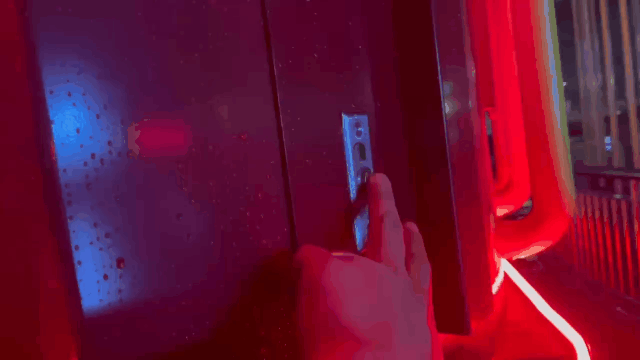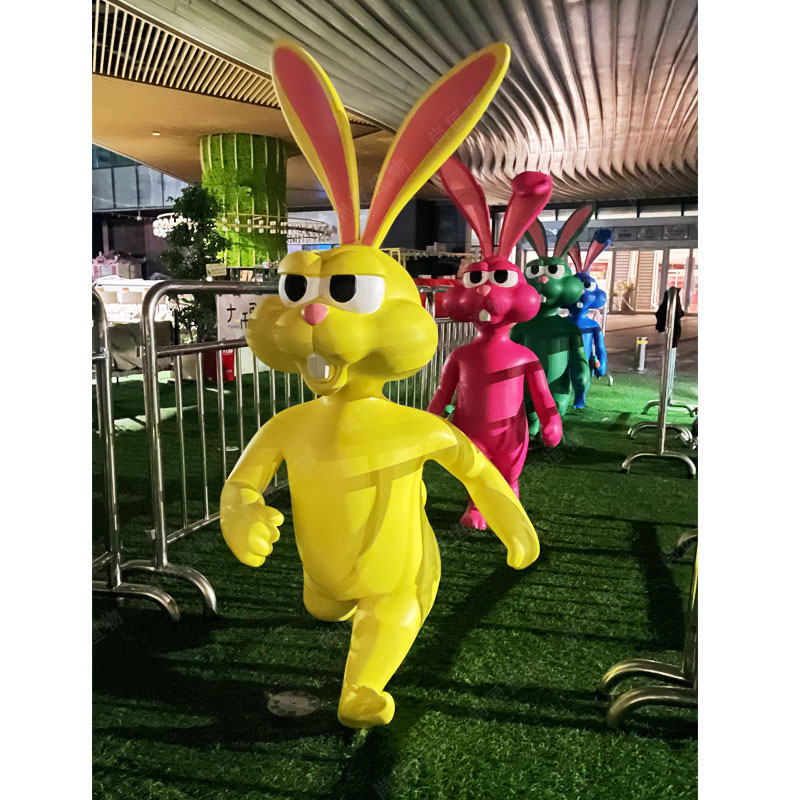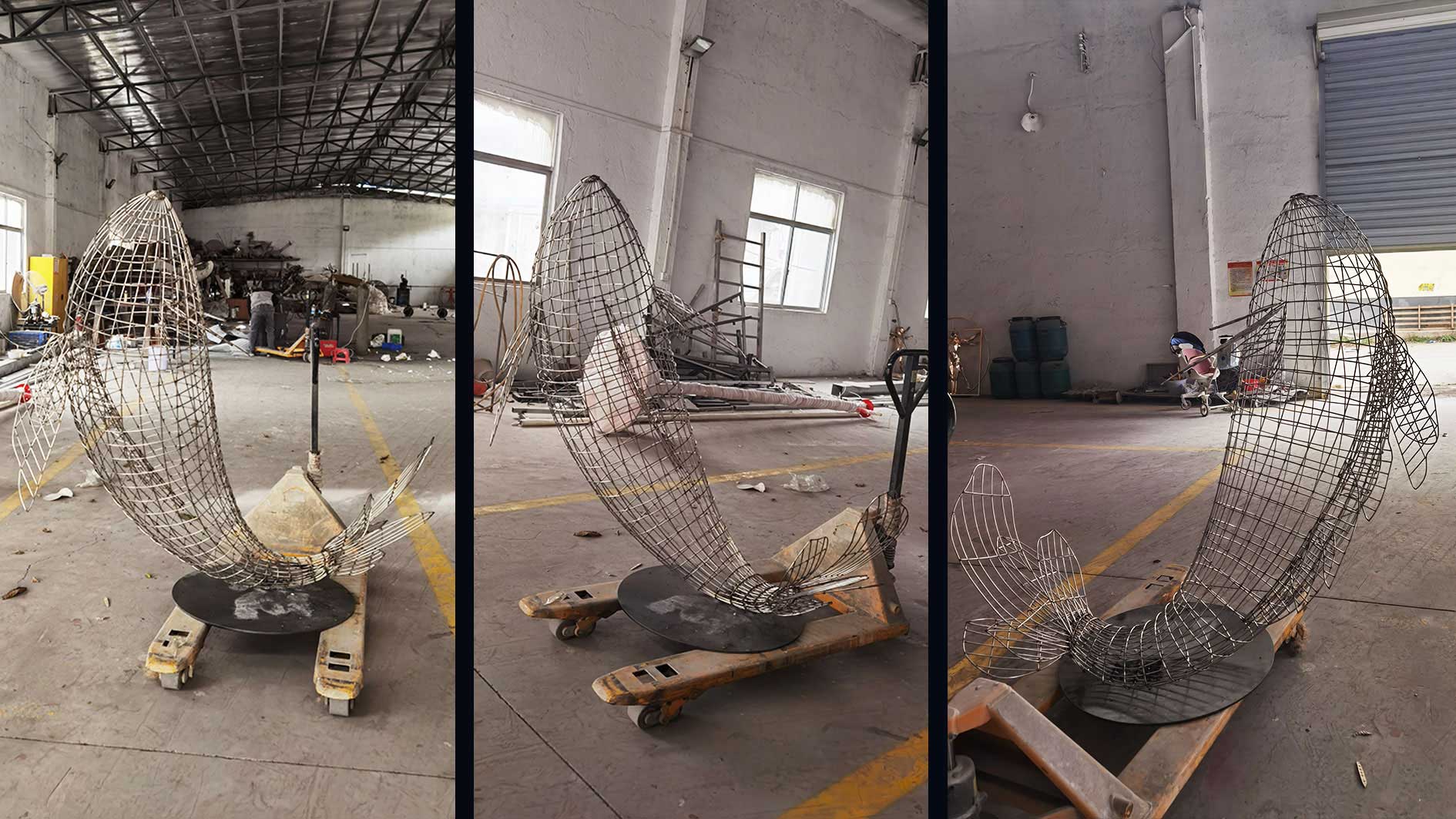Key Takeaways
Kinetic sculpture redefines traditional art by integrating motion as a core element, whether through wind, water, mechanical systems, or human interaction. Unlike static forms, these works emphasize change—transforming spatial relationships, light, and viewer perception over time. Pioneered by mid-20th-century artists like Alexander Calder, whose hanging mobiles harnessed airflow for graceful movement, the genre has expanded to include complex motorized systems and digital interactivity. Modern examples range from public installations activated by passersby to gallery pieces blending robotics with aesthetic design. The interplay between engineered mechanics and organic forces challenges viewers to reconsider how art occupies space, creating dialogues between permanence and transience. Cartoon sculpture, while distinct in style, shares this emphasis on dynamic expression, demonstrating how motion transcends artistic categories. As kinetic sculpture evolves, it continues to bridge art, science, and technology, inviting audiences to experience creativity as a fluid, ever-shifting phenomenon.

Kinetic Sculpture: Art in Motion Defined
Kinetic sculpture redefines traditional art by integrating motion as a core element. Unlike static sculptures, these works rely on movement—whether driven by wind, water, mechanical systems, or human interaction—to complete their aesthetic expression. Artist Alexander Calder, known for his hanging mobiles, once remarked: "Just as one can compose colors or forms, so one can compose motions." This principle underscores how kinetic artists choreograph balance and rhythm to create ever-changing visual experiences.
Tip: When observing kinetic sculptures, pay attention to how light and shadow interact with moving parts—these subtle shifts often reveal hidden dimensions of the artwork.
The classification of kinetic art spans delicate wind-responsive pieces to complex stainless steel sculptures powered by motors. What unites them is their ability to transform perception: a stationary viewer sees the artwork evolve over time, challenging the notion of art as a fixed object. By blending engineering and aesthetics, these works invite audiences to reconsider boundaries between art, science, and the natural world. Transitioning from Calder’s mid-20th-century innovations, contemporary creators continue expanding the medium’s possibilities, setting the stage for deeper exploration of mechanics and interactivity in later sections.
Natural Forces in Kinetic Creations
Kinetic sculptures harness natural forces like wind, water, and gravity to create motion, blurring the line between art and the environment. Unlike mechanically driven works, these pieces rely on unpredictable elements, resulting in ever-changing forms. For example, wind-powered mobiles by Alexander Calder sway in response to air currents, their balanced components rotating in delicate harmony. Similarly, water-driven installations might use flowing streams to spin kinetic components, while gravity-fed sculptures shift weight distribution to generate slow, hypnotic movement.
| Natural Force | Common Use in Sculptures | Example Effect |
|---|---|---|
| Wind | Rotating mobiles | Fluid, rhythmic patterns |
| Water | Flowing installations | Continuous circular motion |
| Gravity | Pendulum-based systems | Slow, directional swings |
Artists often study natural physics to design works that respond organically to their surroundings. This approach not only reduces reliance on artificial mechanics but also invites viewers to observe how subtle environmental changes—like a breeze or shifting light—alter the sculpture’s behavior. Modern creators, such as those designing IP character sculpture, sometimes integrate natural forces with cultural motifs, demonstrating how kinetic art bridges human creativity and elemental energy. By embracing unpredictability, these works challenge static perceptions of art, emphasizing movement as a collaborative dance between artist and nature.

Mechanics Behind Moving Sculptures
The movement in kinetic sculptures arises from carefully engineered systems that respond to external forces or internal mechanisms. While some works rely on natural elements like wind or water—seen in spinning components or flowing liquid channels—others employ mechanical parts such as gears, motors, or counterweights. For example, Alexander Calder’s iconic mobiles balance weighted arms on pivoting joints, allowing air currents to set them in graceful motion. In contrast, motorized sculptures, like those by Jean Tinguely, use timed mechanisms to create rhythmic, machine-like movements.
Precision in design is critical: even slight imbalances can disrupt motion or destabilize the structure. Artists often collaborate with engineers to refine kinetic systems, ensuring durability while maintaining aesthetic intent. This interplay of art and mechanics challenges traditional notions of Realistic sculpture, where static forms dominate. By integrating movement, kinetic artists transform rigid materials into dynamic experiences, bridging the gap between mechanical function and artistic expression. These innovations continue to influence modern installations, where motion becomes a language for engaging viewers in unexpected ways.

Mobiles: Pioneering Kinetic Art Forms
Among the earliest examples of kinetic sculpture, mobiles revolutionized art by introducing delicate balance and fluid motion into three-dimensional design. Unlike traditional static sculptures, these suspended works rely on air currents or manual interaction to activate their moving parts. Alexander Calder, often credited with popularizing the form in the 1930s, crafted abstract compositions from wire and sheet metal, allowing shapes to drift and rotate in unpredictable harmony. His creations demonstrated how simple mechanical principles—levers, pivots, and counterweights—could translate natural forces like wind into visual poetry.
Modern mobiles retain this interplay of structure and spontaneity, though materials now range from polished steel to lightweight polymers. Artists like Rebecca Horn and George Rickey expanded the genre by incorporating precise engineering, enabling larger-scale works to respond to subtle environmental shifts. What distinguishes mobiles within kinetic sculpture is their accessibility; their gentle, hypnotic motion invites viewers to observe changes over time rather than demanding direct interaction. This foundational approach laid the groundwork for later innovations in mechanized and audience-driven art, bridging early 20th-century experimentation with today’s dynamic installations.
Interactive Kinetic Installations Explored
Building on the interplay of natural forces and engineered mechanics, interactive kinetic installations invite audiences to become active participants rather than passive observers. These works often employ sensors, touch-responsive surfaces, or motion detectors to translate human interaction into visual or auditory responses. For instance, a sculpture might ripple like water when approached or emit light patterns triggered by footsteps. This fusion of art and technology redefines spatial relationships, as seen in works like Rafael Lozano-Hemmer’s Pulse Spiral, where heartbeats dictate LED rhythms.
Materials play a critical role in enabling such interactivity. Lightweight Fiberglass sculpture components, for example, allow delicate movements while maintaining structural integrity, supporting complex kinetic systems. Unlike static sculptures, these installations evolve in real time, creating ephemeral experiences that challenge traditional notions of permanence in art. Artists like TeamLab further push boundaries by integrating digital projections with physical movement, crafting environments where every gesture alters the collective narrative. By merging viewer agency with mechanical precision, interactive installations transform galleries into dynamic laboratories of shared creativity.
Perception Shifts Through Dynamic Sculptures
Kinetic sculptures challenge traditional notions of art by introducing movement as a core element, altering how viewers engage with three-dimensional works. Unlike static sculptures, which rely on fixed forms, dynamic pieces create shifting perspectives through rotation, vibration, or environmental interaction. For example, a sculpture suspended in air might sway with subtle breezes, casting ever-changing shadows that transform its appearance over minutes or hours. This fluidity invites observers to question their assumptions about permanence and stability in art.
The interplay of motion and material also impacts spatial awareness. Works like Alexander Calder’s mobiles demonstrate how balanced components in motion can create harmony from chaos, encouraging viewers to track patterns in seemingly random movements. Similarly, contemporary installations using motors or sensors respond to human presence, blurring boundaries between observer and artwork. These experiences highlight how kinetic art reshapes perception by merging time, space, and physical interaction—a theme that bridges earlier discussions on mechanics and sets the stage for exploring the genre’s evolving history.
Evolution of Kinetic Sculpture History
The origins of kinetic sculpture trace back to early 20th-century avant-garde movements, when artists began challenging static art forms. Marcel Duchamp’s Bicycle Wheel (1913), a spinning readymade, marked a radical departure from tradition, introducing motion as an artistic medium. By the 1920s, Constructivist artists like Naum Gabo experimented with mechanical elements, publishing manifestos that celebrated movement’s role in redefining spatial relationships. Meanwhile, Alexander Calder’s hanging mobiles of the 1930s—balanced compositions activated by air currents—established kinetic art as a distinct genre, blending abstraction with organic motion.
Post-World War II advancements in engineering and materials fueled new possibilities. Jean Tinguely’s mechanized sculptures in the 1950s-60s critiqued industrialization through chaotic, self-destructing machines, while László Moholy-Nagy’s Light-Space Modulator (1930) merged motion with light effects. The late 20th century saw kinetic art intersect with digital technology, enabling interactive installations responsive to viewers or environmental data. Today, artists like Theo Jansen fuse biology and engineering in wind-powered “Strandbeests,” illustrating how kinetic sculpture continues evolving—bridging art, science, and the ever-changing dynamics of human perception.

Modern Innovations in Motion-Driven Art
While kinetic sculpture has roots in mid-20th-century experimentation, contemporary artists are redefining motion-driven art through cutting-edge technology and interdisciplinary collaboration. Advances in robotics, programmable motors, and sensor systems now allow sculptures to respond dynamically to environmental inputs like sound, light, or human presence. For instance, Reuben Margolin’s wave-inspired installations use intricate pulley systems to mimic natural rhythms, while Studio Drift’s Franchise Freedom employs drone swarms to emulate starlings’ flight patterns—blurring lines between organic movement and artificial intelligence.
Materials science also plays a pivotal role, with lightweight alloys, carbon fiber, and smart materials enabling fluid, large-scale motion with minimal energy. Interactive installations, such as those by teamLab, invite audience participation through motion-tracking software, transforming viewers into co-creators of shifting visual narratives. Meanwhile, sustainability-focused artists integrate solar power and kinetic energy harvesting, ensuring sculptures generate their own operational energy. These innovations not only expand technical possibilities but deepen the dialogue between art, technology, and ecological awareness—proving kinetic sculpture remains a vital medium for exploring humanity’s relationship with motion in an increasingly automated world.
Conclusion
Kinetic sculpture continues to redefine artistic boundaries by merging form, motion, and viewer interaction. From its early roots in delicate mobiles to today’s technologically advanced installations, this art form demonstrates how movement—whether driven by wind, mechanics, or human engagement—transforms static objects into living expressions. The interplay between natural forces and engineered systems highlights a unique balance, where unpredictability meets precision. As artists innovate with materials like lightweight alloys, sensors, and programmable components, kinetic works increasingly challenge perceptions of space, time, and participation. While historical pioneers like Alexander Calder laid the groundwork, contemporary creators expand possibilities by integrating digital interfaces and environmental responsiveness. Ultimately, kinetic sculpture invites audiences to experience art not as passive observers but as active participants in a dynamic dialogue. Its evolution reflects broader shifts in artistic philosophy, prioritizing process over permanence and fluidity over fixed meaning—a testament to art’s enduring capacity to adapt and inspire.
FAQs
How does kinetic sculpture differ from traditional sculpture?
Kinetic sculpture introduces movement as a core element, unlike static traditional works. Motion is achieved through natural forces like wind or mechanical systems, creating evolving visual experiences.
What materials are commonly used in kinetic sculptures?
Artists often combine lightweight metals, plastics, and organic materials to balance durability and mobility. Mechanical components, such as gears or motors, are integrated for controlled motion.
Can kinetic sculptures function outdoors?
Yes, many are designed for outdoor settings, harnessing wind or water flow. Alexander Calder’s mobiles, for instance, rely on air currents to activate their suspended forms.
How do interactive kinetic installations engage viewers?
These works use sensors or user input to trigger motion, transforming spectators into participants. This interactivity blurs the line between art and audience, fostering immersive experiences.
Are kinetic sculptures energy-efficient?
Some utilize renewable energy, like solar power, to drive motion. Others depend on passive forces, minimizing environmental impact while maintaining dynamic qualities.
What role does balance play in mobile sculptures?
Precise weight distribution ensures harmonious movement. Calder’s hanging mobiles exemplify this, with carefully calibrated arms responding delicately to air shifts.
How has technology influenced modern kinetic art?
Advancements in robotics and programming enable complex, programmable motions. Artists like Theo Jansen create “Strandbeests” that walk autonomously, merging engineering with aesthetics.
Do kinetic sculptures require maintenance?
Mechanical pieces may need periodic calibration to preserve motion integrity. Outdoor works often demand weather-resistant materials to withstand environmental wear.
Why do some kinetic sculptures appear abstract?
Simplified forms emphasize motion over detail, allowing viewers to focus on rhythmic patterns and spatial relationships created by movement.
How do kinetic artists address safety in public installations?
Sturdy construction, smooth edges, and secure anchoring ensure stability. Motion ranges are often restricted to prevent collisions in high-traffic areas.
 ch
ch English
English






